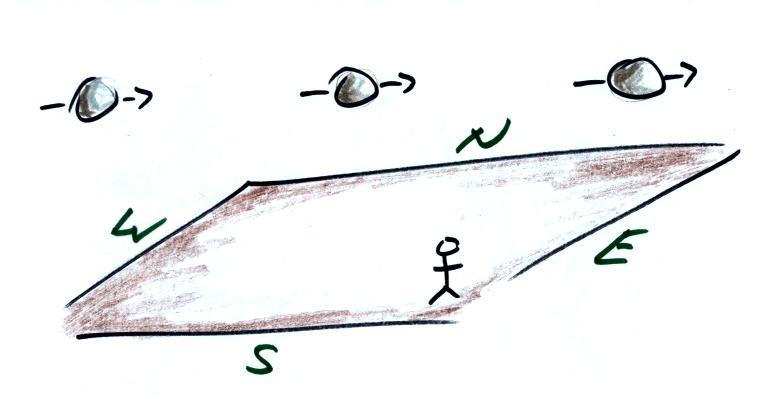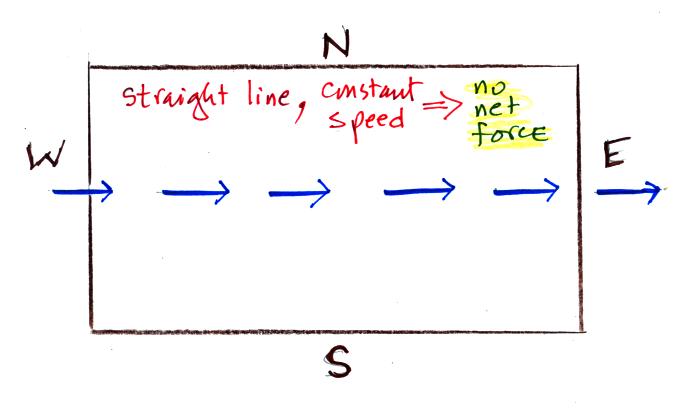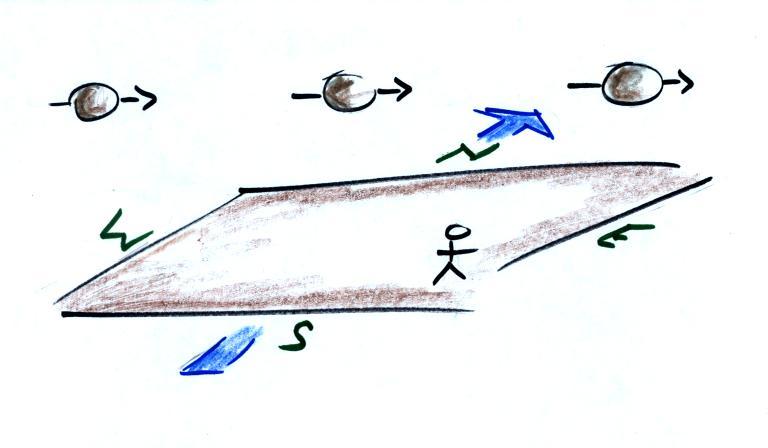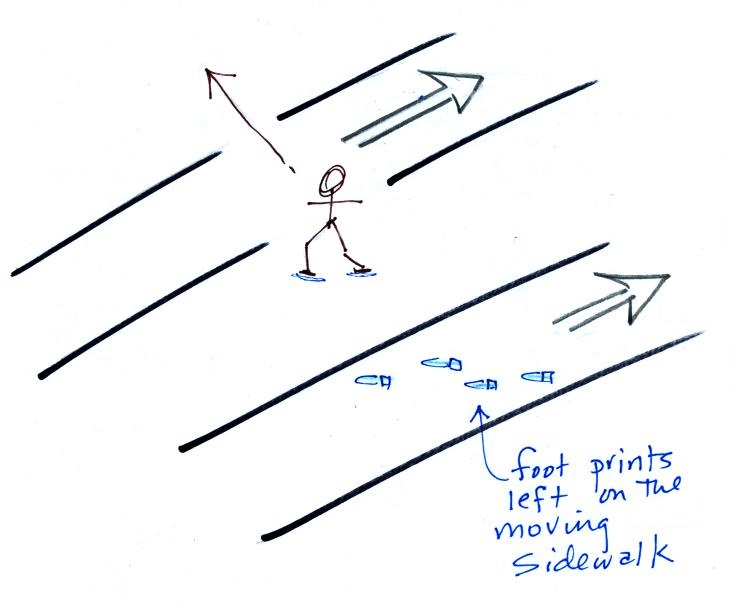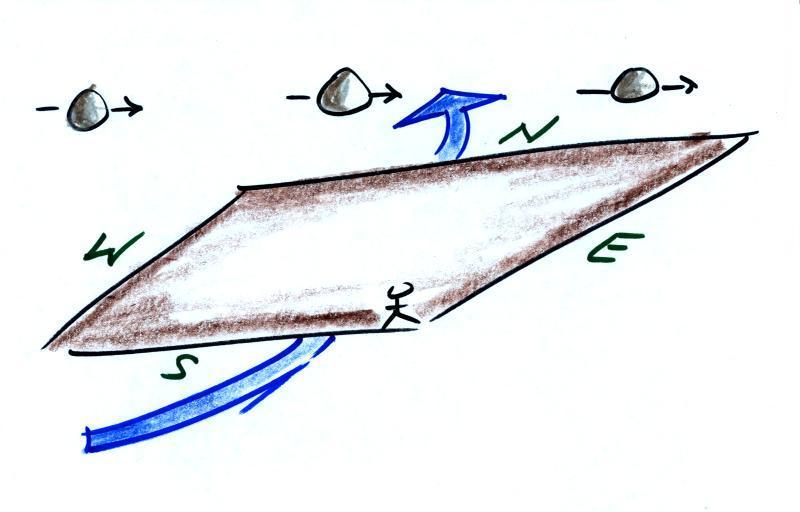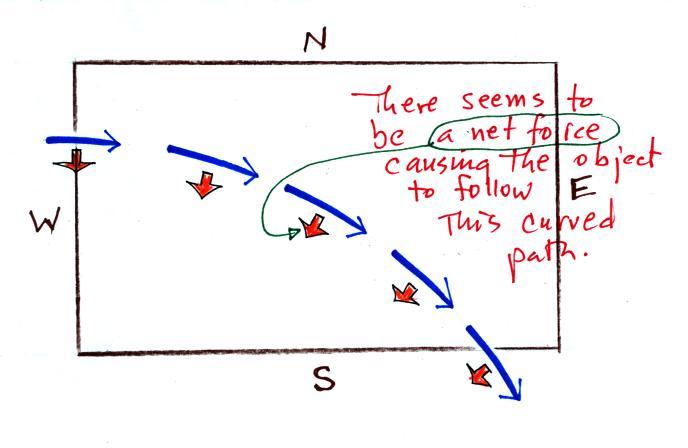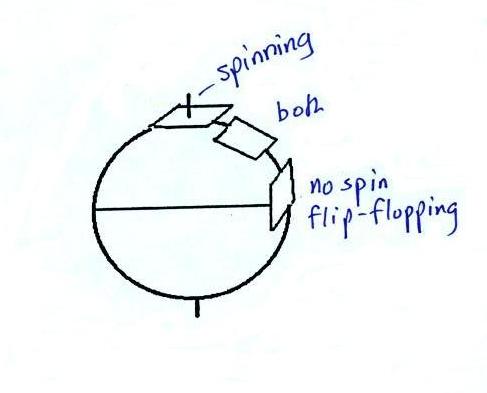Imagine something
flies over Tucson. It travels straight from west to
east at constant speed. You
would,
more
or
less
subconsciously,
plot
its path relative to the ground.
The
next
figure
shows
the
path
that the object would appear to follow as it passed over
the city.
